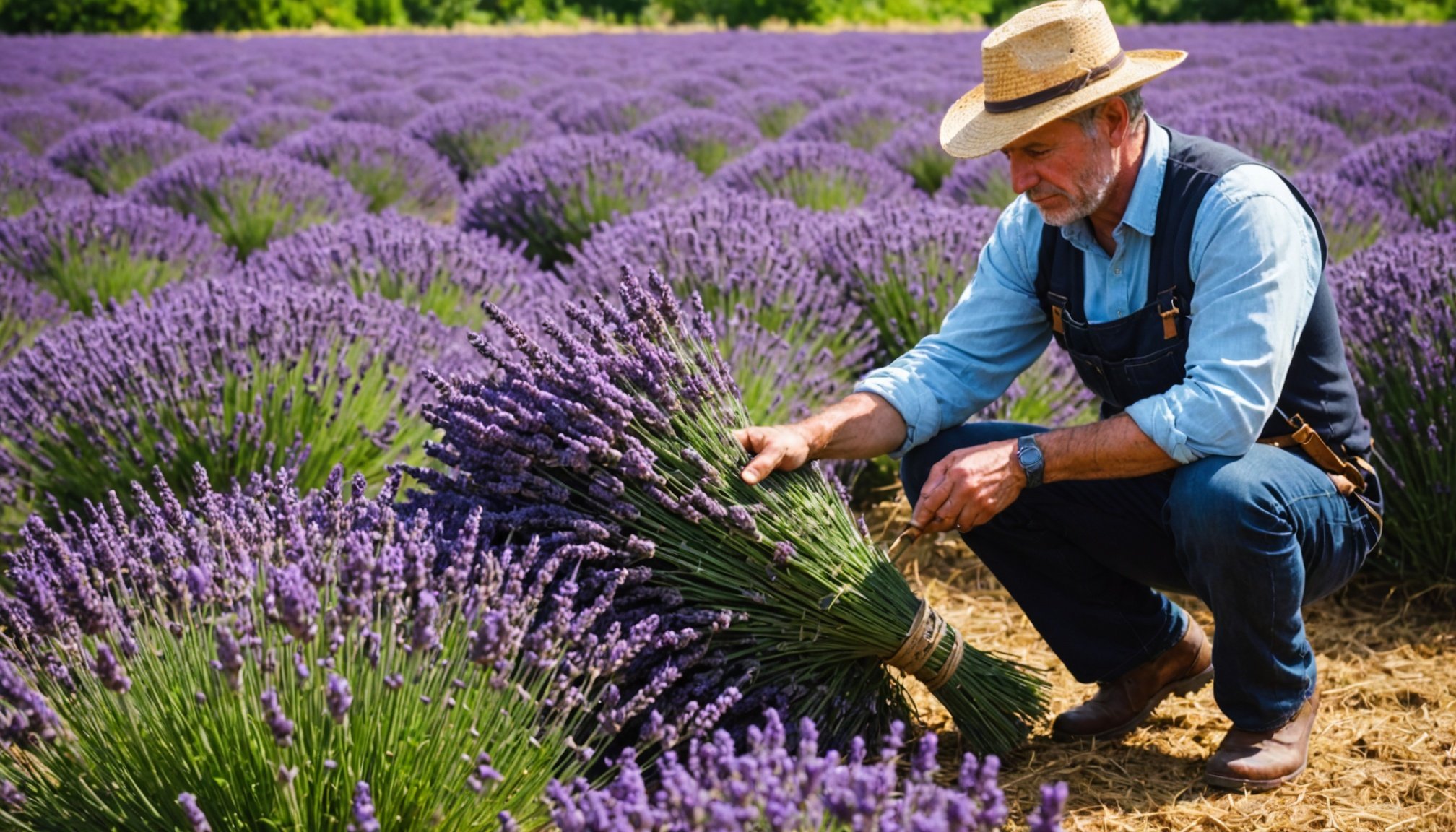Understanding Lavender Cultivation in the UK
Growing lavender successfully in the UK involves understanding the ideal lavender growing conditions. The UK climate is suitable for many varieties, but UK lavender varieties such as Lavandula angustifolia and Lavandula x intermedia are particularly well-adapted. These varieties thrive in the temperate conditions of the UK, despite the variability in weather patterns across regions.
Lavender prefers a warm, sunny environment with well-drained soil. It’s crucial for the soil to be light and sandy; heavy clay soils can be problematic as they retain too much moisture. If your soil isn’t naturally suited, consider adding sand or grit to improve drainage.
This might interest you : Key considerations for successfully establishing a boutique vineyard in the uk
Regional climate variations play a significant role in climate suitability for lavender. In the south of the UK, where conditions tend to be warmer and drier, lavender can flourish with less intervention. In contrast, northern regions may require additional care to ensure protection against excess rain and cooler temperatures.
Tips for optimal lavender cultivation include selecting varieties suited to your regional climate and ensuring your soil and site preparation enable optimal growth. By understanding these aspects, lavender can thrive beautifully across diverse UK landscapes.
Also read : Effective organic pest management techniques for flourishing vegetable gardens across the uk
Preparing for Planting Lavender
When planning to plant lavender, excellent soil preparation is crucial. Lavender demands well-drained soil—one option is to mix sand or grit into existing soil to improve aeration. This enhancement prevents waterlogging, which can lead to root rot. Preparing the soil to a pH of 6.5 to 8 is also advisable to create the optimal growing conditions.
Timing your planting efforts can greatly influence success. In the UK, the best time to plant is usually in spring, after the last frost. This timing allows the plant to establish roots before the more extreme temperatures of summer and winter. Observing regional weather patterns can assist in choosing the ideal planting time to avoid unexpected frosts.
An effective garden layout is beneficial for healthy lavender growth. By spacing the plants about 30-45 cm apart, each lavender bush has ample space for air circulation, which is essential to prevent fungal diseases. Moreover, designing the garden where lavender receives maximal sunlight exposure ensures robust growth and bolsters its drought resistance capabilities. Additionally, consider companion plants that thrive under similar conditions to maximise garden harmony and efficiency. A well-organised layout not only enhances aesthetic value but also optimises lavender cultivation.
Watering Techniques for Lavender
Ensuring proper lavender irrigation is crucial for optimal health and growth. While lavender is known for its drought resistance, appropriate watering still plays a vital role. Newly planted lavender requires regular watering until it is fully established, usually within the first year.
When considering the watering frequency, it’s essential to understand that lavender prefers dry conditions rather than overly moist soil. Overwatering can lead to root rot, while under-watering may stress the plant. A key practice is to water thoroughly but infrequently, allowing the soil to dry out between waterings. This encourages the development of deep roots, enhancing the plant’s resilience during dry spells.
An important aspect of lavender care involves ensuring excellent drainage in the soil. Poor drainage can result in waterlogged roots, compromising plant health. Consider using raised beds or planting on sloped ground to aid in water runoff.
To leverage lavender’s inherent drought tolerance, water in the morning, allowing excess moisture to evaporate with the sun’s warmth. In established gardens, natural rainfall may suffice, with supplemental watering only necessary during prolonged dry periods. Understanding these practices ensures that your lavender plants remain robust and flourishing across the UK’s varying climates.
Managing Pests and Diseases
Lavender plants, while generally resilient, can still fall victim to various lavender pests that may affect their health. Common culprits include aphids, spittlebugs, and the lavender beetle. Identifying these pests early is crucial; look for signs such as discoloured leaves or stunted growth.
Disease prevention is a proactive approach to maintaining healthy lavender plants. Fungus, like root rot, is a common issue, especially in poorly drained soils. Ensuring the soil remains well-drained can significantly reduce fungal risks. Planting in raised beds or sunny spots facilitates drainage and airflow, limiting conditions favourable to disease development.
For organic pest control, consider using natural deterrents such as neem oil or diluted soap sprays. Encouraging beneficial insects like ladybugs can also mitigate pest populations effectively. Companion planting with herbs such as rosemary can offer a natural pest barrier, promoting a healthier ecosystem within the garden.
Proactive strategies can help ensure your lavender grows robustly; regular monitoring and maintaining healthy soil conditions are pivotal. By integrating these methods into your gardening routine, you can successfully safeguard your lavender plants against pests and diseases. This longevity in lavender care results in thriving, vibrant plants that enhance your garden’s aesthetic and olfactory appeal.
Techniques for Harvesting Lavender
Harvesting lavender at the right time and using the correct techniques is crucial to maximise its quality and aroma. The ideal time to harvest is when about half of the flower buds on the spike have opened, typically in the early morning when the essential oils are most concentrated.
Timing and Methods
To achieve the best results, use a sharp tool such as a sickle or scissors to cut the stems, leaving a few inches of green growth to support the plant’s regrowth and maximise its longevity.
Drying and Preserving Quality
Once harvested, it’s vital to dry the lavender properly. Bundling the stems and hanging them upside down in a dark, dry place ensures they retain their fragrance and colour. This process typically takes two to four weeks.
Post-Harvest Care
Proper post-harvest care includes storing dried lavender in airtight containers placed in a cool, dark environment. This helps preserve the lavender’s aromatic properties and ensures its usability for various purposes, such as crafting, cooking, or oil extraction. Implementing these practices contributes to sustaining high lavender quality and prolongs its usage potential.
Maximizing Yield and Plant Health
Boosting lavender productivity involves addressing lavender care tips and ensuring optimal plant health through targeted practices. One essential element is the application of the right fertilizer. While lavender thrives in poor soils, applying a balanced fertiliser in spring can enhance growth and yield. Opt for low-nitrogen formulas to discourage excessive foliage and focus on flower production.
Pruning Techniques
Pruning techniques are critical for maintaining lavender’s shape and promoting lush blooms. Prune annually in late summer after flowering to remove about one-third of the growth, fostering a bushier plant. Avoid cutting into the woody stems, as this could harm regrowth potential.
Seasonal Maintenance
To ensure vibrant lavender year-round, adapt care practices seasonally. In spring, conduct fertilizer application and prune as needed. In summer, maintain proper watering frequency to support flowering. Autumn involves tidying plants, removing dead leaves, and lightly pruning to prepare for winter dormancy.
Regular monitoring and adapting your care routine according to the seasons will result in not only thriving plants but also enhanced resilience and productivity. These lavender care tips, including specific fertilization and pruning strategies, are instrumental in achieving maximum yield and maintaining plant health.

